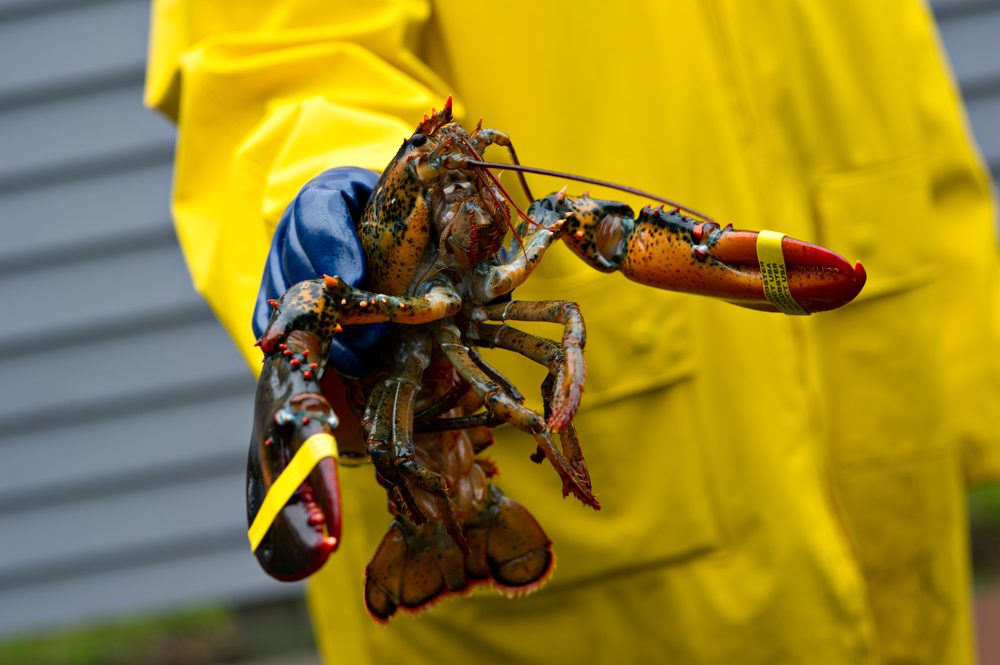By Mark Skalny / Shutterstock
By Justin Fox (Bloomberg View) — The numbers came in earlier this month on Maine’s 2017 lobster harvest. By historical standards, the 110.8 million-pound, $434 million haul was pretty spectacular. But it was a lot lower than 2016’s 132.5 million-pound, $540 million record, and it was another sign that the Great Lobster Boom that has surprised and delighted Maine’s lobster fishermen since the 1990s — and brought lobster rolls to diners from coast to coast — may be giving way to … something else.
The lobster boom does not seem to be the result of overfishing; Maine’s lobster fishermen figured out a set of rules decades ago that appear to allow them to manage the catch sustainably. There are just lots and lots more lobsters off the coast of Maine than there used to be. Why? In a column last spring, I listed four reasons that I’d heard during a trip to Maine:
Warmer temperatures in the Gulf of Maine. A collapse in the population of cod, which eat young lobsters. Reduced incidence of a lobster disease called gaffkemia. Increased effort and efficiency on the part of lobstermen, who go farther offshore and can haul in more traps in a day than they used to.
Several readers then wrote in to point to another theory: Because it is relatively easy for lobsters to walk in and out of the traps set for them, they are effectively being farmed — growing big on the yummy morsels of herring that the lobster fishermen leave for them until they are finally unlucky enough to be in a trap when it is pulled to the surface.

Whatever the cause, the lobster harvest is much bigger than it used to be. So Maine’s lobster industry has had to find new markets. The Luke’s Lobster and Cousins Maine Lobster lobster-roll empires, which are both less than a decade old and now stretch across the U.S. and into Asia, are two of the most visible successes of that effort.Given how quickly the lobster harvests grew, though, especially from 2007 through 2012, it’s hard not to wonder whether they might not eventually collapse. They already have in several states farther down the Atlantic coast. Lobster landings were still on the rise as of 2016 (data aren’t available yet for 2017) in New Hampshire and Massachusetts but peaked in Rhode Island in 1999, Connecticut in 1998, New York in 1996 and New Jersey in 1990.
So that’s some evidence for the warming-ocean-temperatures theory of the lobster boom. This would imply that eventually even the oceans off Maine will get too warm, although it doesn’t give much of a hint as to when.Offering more of a hint on timing are the American Lobster Settlement Index readings made by the University of Maine School of Marine Sciences along with fisheries agencies in the U.S. and Canada. The settlement index measures the density of baby lobsters in quadrants of rocky seafloor, and its readings started declining off the coast of Maine about a decade ago. It takes five to 10 years for a lobster to reach harvestable size, so “the downturn in Maine’s landings is indeed consistent with our ALSI based forecast,” University of Maine zoologist Rick Wahle wrote in an email.
Recent ALSI readings (the 2017 numbers are due out in May) have not shown any signs of a Maine resurgence. They look a little better for parts of Canada, where Nova Scotia and New Brunswick in particular have been experiencing booms similar to Maine’s:
For a while this fall, it looked like Maine’s harvest would not just be down from 2016 but below 100 million pounds for the first time since 2010. The catch was much stronger than usual in December, though, a trend that continued into January, said Luke’s Lobster founder Luke Holden. But that is in itself a bit unsettling. “There’s no question that the timing of landings is changing,” Holden told me. Peak lobster season in Maine used to be September through November. Now it may be shifting to later. Which raises questions of what else might be changing.
This column does not necessarily reflect the opinion of the editorial board or Bloomberg LP and its owners.
© 2018 Bloomberg L.P

 Join The Club
Join The Club












